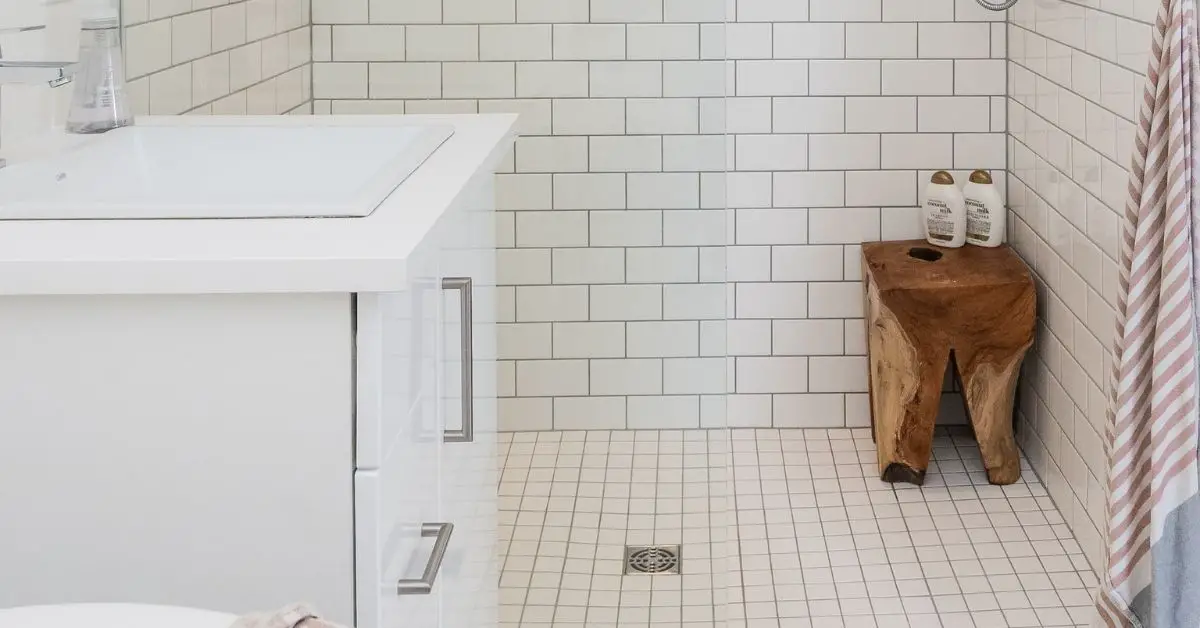Share

The shower drain is a tricky thing to install. There are many different types of drains to choose from, and all the instructions for installing them vary depending on the type.
One way or another, you’ll need to figure out which kind you have before continuing with this post! This article will teach you how to connect a shower drain in seven easy steps!
What Is A Shower Drain?
A shower drain is a plumbing fixture used to remove water from showers, baths, and similar fixtures. It consists of one or more pipes that the drain runs through before it enters another pipe leading to an open-air section (called stack) or into the soil via some trapway.
A shower drain may be connected by “wet venting” – that is, directly into other piping without any added ventilation. However, this leads to code violations in most areas as well as a high risk of back-siphonage if there are blockages along its path.
How to Connect a Shower Drain
Here are the 7 steps to connect a shower drain to your home’s plumbing.
Step 1: Prepare for Draining
Before you can connect the drain, you need to ensure that it will be able to receive water. If your shower already has a plug installed, then remove the rubber gasket sealing off the opening and take out the drain assembly (plug included). Clean out any old caulk or debris around this area as well before proceeding.
Step 2: Prepare Drain Pipe
If there isn’t an existing hole where you would like to install your new drain pipe, drill one yourself with a spade bit; make sure not to drill all the way through into another room! Once completed properly, use plumber’s putty on either side of each end of PVC piping and slide them through the hole you have just drilled. The piping should fit snugly, but you can use some Teflon tape to tighten things up a bit if it doesn’t.
Step 3: Connect Drain Pipe
Now that you have the piping in place, it’s time to connect your shower drain. Measure and cut a section of ABS pipe (about 12 inches) and slide one end onto each PVC fitting on either side (make sure they are aligned properly).
Apply some Teflon tape to where these two pieces meet before adding more putty on top of them so everything stays secure. Once fully dry, add another layer over all seams with caulk or additional plumber’s putty for extra protection against leaks.
Step 4: Connect Overflow Plate
Once the plumbing is done, it’s time to attach an overflowing plate if needed. Otherwise, skip this step entirely! This part will protect homeowners from flooding in the event of a clog or other type of blockage by diverting water from overflowing.
Place one end onto your drainpipe and use plumber’s putty to hold it into place. When dry, add a final layer over all seams with caulk for extra protection against leaks before sliding on an overflowing plate that matches up accordingly.
Step 5 Connect Drain Pipe Extension
If there isn’t enough room behind your wall to fit both ends of piping out at once (or if this is simply how you want things installed), connect a section of ABS pipe between them using Teflon tape and more plumber’s putty along its edges when finished instead. Make sure not to connect anything underneath where the drain will sit.
Step 6: Connect Drain Assembly
Once all connections have been made, it’s time to add the drain assembly – but only if you haven’t already done so in a previous step! The drain pipe can be set directly into place by using a rubber gasket and screws on either side of it after applying some silicone caulk between them first.
If using an overflow plate, attach that according to manufacturer’s instructions before adding more plumber’s putty along its edges when finished instead. Make sure not to connect anything underneath where the drain will sit.
Step 7: Finish Installation & Seal Plumbing Pipes Together
Finally, push your piping back inside until they are fully connected with each other without leaving any gaps or letting them slip out. Once all connections have been made, it’s time to add the drain assembly – but only if you haven’t already done so in a previous step!
The drain pipe can be set directly into place by using a rubber gasket and screws on either side of it after applying some silicon caulk between them first; make sure not to connect anything underneath where the drain will sit and seal off any other openings near this area (including the overflow plate) with more plumber’s putty for extra protection against leaks.
Tips When Installing a Shower Drain
- Make sure all connections are secure by using plumber’s putty to hold piping into place and caulk over seams for extra protection against leaks.
- If the drain is difficult to push inside, use some WD40 or other lubricant of your choice so everything slides together nicely.
- Be careful not to force anything during installation as this could cause damage/leaks! With these seven steps, you can connect shower drains with ease no matter if it’s in an existing bathroom or brand new construction
- Just be sure that you have proper ventilation set up first before adding water!
Connecting a shower drain is easy with these instructions! Just remember to be careful and use proper ventilation when adding water!
Suggested Post
- How to Use a Plumbing Snake in a Shower Drain: 6 Basic Steps
- How to Install a Vent Pipe Through a Roof: 7 Simple Steps



0 Comments